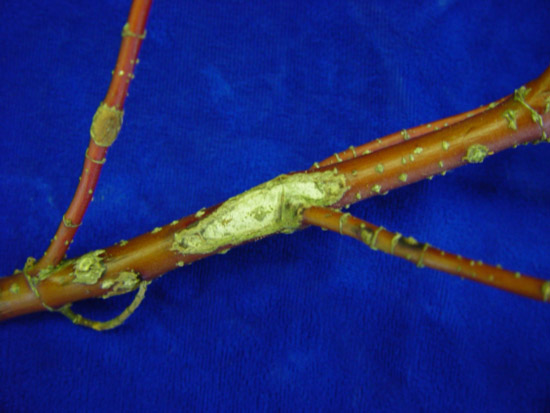Issue 1, April 22, 2013
Drought
The Midwest suffered greatly during the summer drought of 2012, as the drought caused many problems ranging from vastly reduced yields of staple crops, to the decline, and sometimes death of ornamentals. For Illinois, the drought has ended as no portions of the state are currently listed under the U.S. Drought Monitor. The lasting effects of the 2012 drought will likely be seen for years to come.
Drought causes serious stresses to plants, including overall reduced plant vitality. Young plants often face a much larger struggle when trying to recover from drought because they do not have an established root system. Whatever the maturity of the affected plant, there are a handful of standard factors that will affect plant survivability after drought. The most important factor to note is the severity and timing of the drought. However, keep in mind that many plants have adapted survival techniques to deal with water stress.
Drought can have primary as well as secondary effects on trees. Primary effects occur as various plant tissues (roots, leaves, twigs, etc.) dry and become desiccated. This type of damage is commonly first observed as yellowing and browning along the margins of leaves and progresses towards the center of the leaves.
Secondary effects of drought stress occur as normal plant physiological functions are inhibited. In trees, drought stress can cause photosynthesis to cease, thereby hindering plant growth. Drought stress may also prevent the production of defensive chemicals, and could make the tree more susceptible to climate extremes (sunscald, frost crack from winter injury, and high winds). Trees may also be more sensitive to pesticide injury, phytotoxicity, salts from deicing, construction damage, insects, animals, and nutrient competition.
This leaves (no pun intended) plants vulnerable to opportunistic and secondary pathogen infection as well as pest infestation. These invaders often arrive in tandem and work together to bring their host plant to decline. A great example of this would be the sawyer beetle finding and feeding on a stressed pine tree. This beetle is the vector of the Pine Wilt Nematode, which causes pine wilt diseases. The beetle may also deposit eggs in the tree, which will hatch into wood boring larvae. The larvae and the beetles will feed under bark and form galleries. In addition to these two secondary invaders, they are often joined by a third invader called blue stain fungi. The blue stain fungi will make use of the injury caused by the nematodes and larvae as points of infection, which can clog up the vascular system of the tree. Together, all of these invaders can kill a stressed pine tree in very little time.

Picture of trees infected with the pine wilt nematode, which causes pine wilt disease -- taken by Nancy Pataky
Unfortunately, the above example serves as one of many; there are many other examples of secondary invader pathogens to trees after drought with differing effects. Armillaria causes a root rot and mushrooms to form at the base of many stressed woody plants. Stressed pine trees will be more susceptible to Diplodia infection, which can cause tip blight and cankers to form on wood. Expect to see drought compromised deciduous and coniferous hosts infected with "oozing" Cytospora cankers. We are already seeing the effects of the Hypoxylon canker on oaks and expect to see many more fungal canker fungi (Botryosphaeria and Nectria) infecting woody ornamentals, thanks to drought stress. Not all pathogens causing severe damage after drought are secondary invaders.

Picture of a Dogwood infected with a Botryosphaeria canker.
The best way to deal with these problematic secondary pathogens is to carefully scout plants and to follow proper cultural care techniques. To start, make sure plants are in well drained soil with good organic matter content, with mulch to conserve moisture, insulate roots, and fend off competitive weeds and mechanical damage. When planting, also avoid planting highly drought susceptible plants or those with shallow roots in drought prone sites. When drought signs and symptoms begin to appear on a plant, you will need to act immediately. Prune off dead branches as they appear or if a tree has died, remove it quickly to avoid luring in more secondary pests to nearby plants. When winter comes, after a season of drought, make sure to irrigate plants before they go dormant. Adequate soil moisture is necessary all year long and a stressed winter plant could have more trouble in the following spring. Follow Integrated Pest Management principles throughout the growing season to ensure proper care and alertness when it comes to plant pathogens and pests. (Sean Mullahy, U of I Plant Clinic student; Stephanie Porter)
Authors:
Sean Mullahy
Stephanie Porter